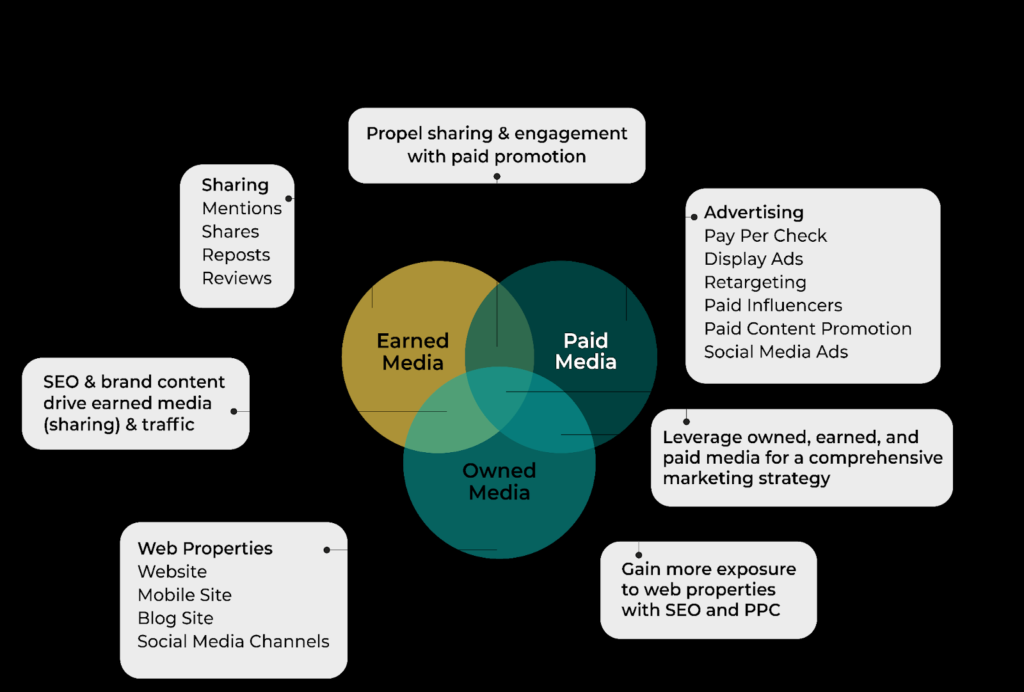The Ultimate Guide to Creating a Content Distribution Strategy In 6 Easy Steps

Content distribution refers to the process of disseminating content, such as text, images, audio, or video, to a wide audience through various channels. Content distribution ensures your content reaches as many people as possible and maximizes your content’s exposure.

Content distribution can take many forms, such as social media platforms, email marketing, paid advertising, influencer marketing, search engine optimization (SEO), content syndication, and more. The choice of distribution channels will depend on what kind of content is being distributed, the target audience, and the budget.
Effective content distribution requires a well-planned strategy that considers the goals, target audience, and campaign budget. A good content distribution strategy should include a mix of organic and paid channels to maximize reach and engagement.
Content distribution is crucial for businesses and individuals looking to promote their products, services, or ideas. By leveraging the power of various distribution channels, content creators can build their brands, attract new customers, and increase their revenue.
Here’s your ultimate guide to creating a content distribution strategy.
The Importance of a Content Marketing Distribution Strategy

A content marketing distribution strategy is essential for the success of any content
marketing campaign. While creating high-quality, informative, and engaging content is important, it is equally essential to ensure your content reaches the right audience. Without a proper distribution strategy, even the best content may go unnoticed or reach the wrong audience. A content distribution strategy helps ensure that the right people are exposed to your content at the right time, through the right channels.
A content marketing distribution strategy is crucial for businesses and individuals who want to increase their online visibility and engagement with their audience. Here are some of the reasons having a content delivery strategy is important:
- Reaching the right audience: With so much content available online you must ensure that your content reaches the right people. A distribution strategy helps target specific demographics and interests, ensuring that your content is seen by the right audience.
- Increasing visibility: A well-planned content marketing distribution strategy can help increase the visibility of your content. By leveraging various channels and platforms, you can reach a wider audience, which can lead to increased brand awareness and recognition.
- Generating leads: Content marketing is an effective strategy to generate leads. With a proper content delivery strategy, you can reach potential customers and encourage them to take action, whether it is signing up for a newsletter or purchasing a product.
- Building relationships: Content marketing helps to build relationships. By providing valuable and relevant content, you can establish yourself as an authority in your industry, and build trust with your audience.
- Build brand awareness: Consistently distributing quality content helps build brand awareness and establish your brand as a leader in your industry.
- Improve SEO: By distributing your content across different platforms and channels, you can increase the number of backlinks to your website, which can help to improve your search engine rankings.
- Maximizing ROI: A content marketing distribution strategy helps ensure that your content is being seen by the right people, which can lead to a higher return on investment. By targeting specific demographics and interests, you can ensure that your content reaches an audience that is more likely to engage with your brand.
Overall, a well-planned content distribution strategy can help you to achieve your marketing goals and improve your online presence.
How To Create a Content Distribution Strategy In 6 Steps
Crafting a good content distribution strategy involves careful planning and execution. This ensures that your content reaches the right audience at the right time.

Here’s a detailed guide to help you create an effective content delivery strategy in six steps:
Step 1: Define the right target audience
The first step in creating a content distribution strategy is to define the right target audience. You need to know who your ideal customers are, their interests, and where they spend their time online. Understanding your audience’s needs and preferences will help you create content that resonates with them and distribute it effectively.
Step 2: Identify your distribution channels
Once you’ve identified your target audience, you need to determine the best channels to reach them. Your distribution channels can include social media platforms, email marketing, your website, and third-party content distribution networks. Each platform has unique strengths and weaknesses, so choose the most effective ones for your content and audience.
Step 3: Create a content plan
Once you’ve identified your distribution channels, create a content plan that aligns with your overall marketing strategy. Your content plan should include the different types of content you will create, the format, the frequency, and the distribution channels you will use for each piece of content. Consider how your content can add value to your target audience and address their pain points.
Step 4: Optimize your content for search engines
Optimizing your content for search engines can increase your visibility and drive traffic to your website. To optimize your content, conduct keyword research and include relevant keywords in your content. Optimize your metadata, such as title tags and descriptions, and ensure your website is mobile-friendly.
Step 5: Amplify your content
Content amplification refers to promoting your content for it to reach a wider audience. Amplification strategies include paid advertising, social media advertising, influencer marketing, and content syndication. Choose the amplification strategies that align with your content and budget.
Step 6: Measure results
Finally, track your content’s performance and measure the results. Use analytics tools to monitor your traffic, engagement, and conversion rates. Analyze the data to understand what’s working and what’s not, and adjust your content delivery strategy accordingly.
To Summarize
In conclusion, an effective content delivery strategy involves understanding the target audience, choosing the right distribution channels, creating high-quality content, optimizing it for search engines, amplifying it, and measuring the results. By following these six steps, you will be able to develop a content distribution strategy that will help you reach your marketing goals.
FAQs
A content distribution strategy is a plan that outlines how and where you will distribute your content to reach your target audience. It helps you to increase your reach and engagement with your audience by making your content available through various channels.
A content distribution strategy is important because it helps you to reach your target audience where they are most active. It allows you to maximize your content’s visibility and increase your reach, ultimately leading to more traffic, leads, and conversions.
Some key elements of a content distribution strategy include identifying your target audience, selecting the right distribution channels, creating a content calendar, monitoring and analyzing performance, and adjusting your strategy as needed.
Some effective content distribution channels include social media platforms, email marketing, content syndication, influencer marketing, paid advertising, and search engine optimization (SEO).
You can measure the success of a content distribution strategy by tracking key performance indicators (KPIs) such as website traffic, social media engagement, email open and click-through rates, conversion rates, and ROI. Regularly monitoring and analyzing your KPIs can help you to optimize your strategy and improve your results over time.
1. Continually analyze and measure the results
2. Experiment with different channels and formats
3. Focus on creating high-quality content that resonates with your audience
4. Ensure your distribution channels are aligned with your target 5. audience’s preferences and behavior.
Latest Blogs
Learn how to rank on AI search engines like ChatGPT, Perplexity, and Gemini by optimizing your content for authority, structure, and relevance. Stay ahead in AI-driven search with this strategic guide.
Explore the best healthcare SEO services for your medical practice. Improve online visibility and effectively reach more patients in need of your services.
Discover top social media agencies specializing in banking solutions, enhancing financial services and driving engagement.
Get your hands on the latest news!
Similar Posts

Content Operations
7 mins read
Mastering Content Distribution Tactics: A Comprehensive Guide

Content Operations
4 mins read
Streamlining Your Process: The Importance of Content Workflow Management

Content Operations
6 mins read